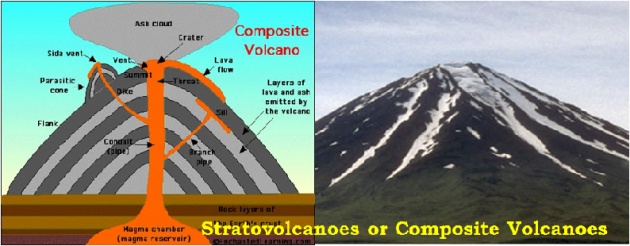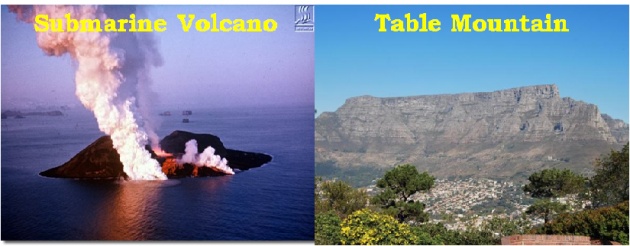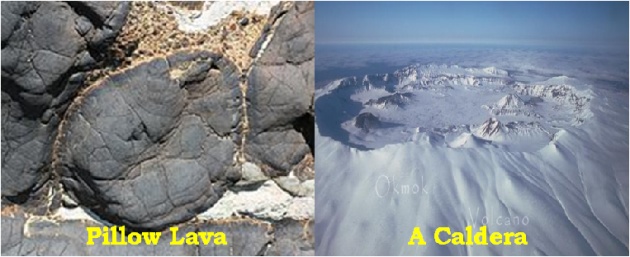These result from the eruptions of small pieces of scoria and pyroclastics (both resemble cinder [partly burnt substance], hence the name of this volcano-type) that build up around the vent. These are relatively short-lived eruptions that produce a cone-shaped hill usually 30 to 400 meters high. Most cinder cone volcanoes erupt only once in their lives.

Stratovolcanoes or Composite Volcanoes:
These are the tall conical mountains composed of lava flows and other ejecta (material ejected, usually the solid material) cooled and solidified in alternate layers.

These are large volcanoes which usually have large Caldera (A large crater formed by the collapse of the peak of volcanic cone) and potentially produce enormous devastation, sometimes on large land scale. This volcano would be able to cause imense global cooling for many years afterwards.

Submarine Volcanoes:
These are common on the ocean floor. Some are active and disclose their presence in shallow water by blasting the steam and rocky debris high in the sea
Subglacial Volcanoes:
These are developed underneath the Ice-caps. They are made up of flat lava which flows at the top of Pillow Lava (the lava which exhibits the pillow-shaped structure attributed to the extrusion of the lava under water) and Palagonite (a hard clay-like rock produced from the interaction of water with Volcanic Glass [glass-like amorphous product of rapidly cooled lava] having the chemical composition similar to Basalt - a hard, dense, dark volcanic rock chiefly composed of plagioclase, pyroxene and olivine, exhibits the glassy appearance). In case of glacial volcanoes, when the ice cap melts, the lava on the top collapses, leaving a smooth-top mountain. Such volcanoes are called Table Mountains.



